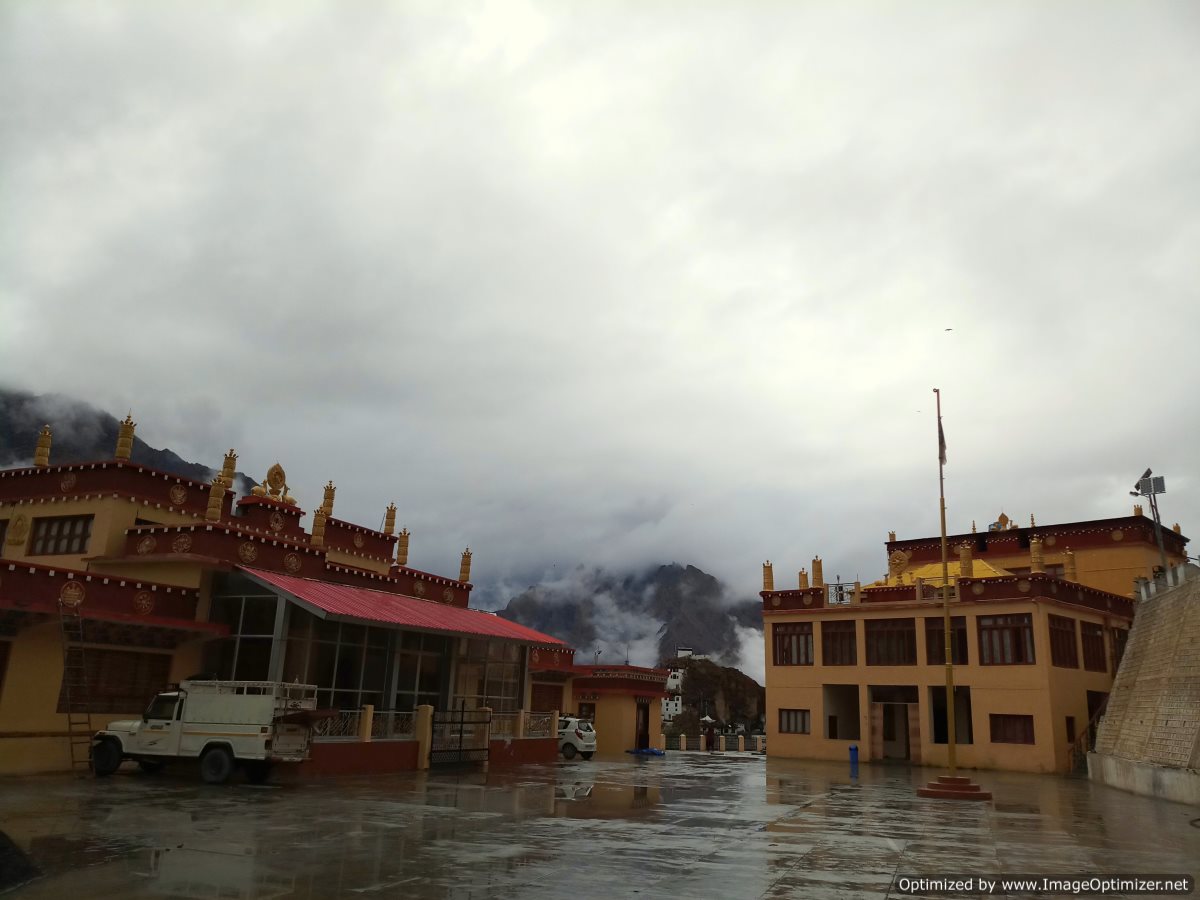By the time I reached Tabo, I had promised myself to completely ditch the word ‘planning’. There was no need of it, I was in Spiti, and I wanted to remain spell-bound by this ‘time wrap’. And in the course of staying a little long in Tabo to enjoy the morning sun and my host’s famous pancakes, I happened to miss the only bus to Kaza. But Spiti is a land of hope against all the hardships; and in hope to get a hitch-hike to Schichlling, I took the road. Spiti is unpredictable, and travelling here can’t be a time-table job. Thankfully I was travelling light, keeping enough space in my backpack to pack memories back home.

In such a hospitable place, hitch-hiking is quite possible, and even waiting or walking a few kilometers doesn’t hurt. The pace of life here is slow, and people warm and hospitable. After walking for a few kilometers, passing villages with a population board stating “50 souls”, I got a ride to Schichlling. Next on my Spiti trail was Dhankar monastery, and a trek to the Dhankar Lake perched high in the mountain. I reached Schichlling in about half an hour. From there my journey was another ten kilometers uphill to the Dhankar village. From downhill, Dhankar looked like a village created by stacking some matchboxes, on a craggy brown hill, and two rivers merging with each other in the foothill. The 1000-year-old Dhankar, perched precariously on jutting rocks on a mountaintop. The Dhankar monastery is listed among the 100 most endangered monuments in the world by the World Monuments Fund. The old monastery is on a constant fight with the elements of nature. While it’s still in good terms with snow, and an unimaginable amount of it, it is losing battle against increasing and disturbing patterns of rainfall, a fall-out of global reality of climate change. The signs of heavy rain, the day before, were evident everywhere in washed away roads, and wet mountains.


The journey uphill can be tiring. To cut short distance and time, I regularly took the mountain tracks used by locals and lamas. With every turn, the village became clearer, and the landscape more majestic. The sight of the two rivers merging into each other, with the monastery perched on the mountain overlooking at them as some angelic guardian, can inspire random thoughts and leave travelers click frenzy. Paul Theroux wisely noted that ‘tourists don’t know where they’ve been, and travelers don’t know where they’re going’. And such had become my state, a guy with no plans, not knowing his destination, just heading ahead in search of some conversations and sights that can take to the great recesses of cultures.


There is newly built monastery at the beginning of the village, but the real treasure is the old monastery perched high. The revered dead animals hanging from the walls looked at a complete loss at the changes, racing at an unprecedented speed to embrace this ‘lost in time’ monastery. The gorgeous murals on the walls of inner sanctum of the monastery leave you in a bewildered state. The visit through the prayer halls of the monastery is short, but enough to leave indelible imprints on you. A board outside says that only twenty people can enter monastery at a time, because of the fragile state it is in. The first storey has a main prayer hall and some rooms. A fragile flight of steps lead to the rooftop of the monastery. I looked out of the window, and could only see a cloud laden sky. It seemed as if mist had overtaken the mountains, or like I were in some dreamy wonderland. From the rooftop, I breathed in the moment, the full glory of the confluence of Spiti and Pin Rivers and their glittering floodplains. The floating clouds cast moving shadows, and up from there, I felt some elf, watching over his little world from such highs.


The downpour had started even before I had made moves to trek up to the Dhankar Lake. But some company, grit, and endless desire to see another shade of this landscape, caught on me, and I moved unconcerned of the downpour. The dreamy trek uphill, with the rugged mountains and the village on one side, a quietly flowing river on other side and the whole panorama to you, was enough to keep the passion going, inspite of the rain gathering pace. Another three hour of treacherous walk, and I was at a height to capture the beauty of the Dhankar monastery from an unimaginable angle. At a side of the lake stood a stupa, as a host. The sheer serenity of the place, and the feeling of scaling that height, is probably worth all the pain and labour of the trek.

To reach: Dhankar is almost 20 kms from both Tabo and Kaza. Regular buses go up to Shichlling, and from there one needs to take a private or shared vehicle to the Dhankar village, some 8-10 kilometers uphill. To stay: Dhankar monastery offers homestay options. Apart there are some homestays too in Dhankar. Otherwise one can always do Dhankar while on way to Kaza from Tabo or vice-versa.









Mesmerised,
a place longing to see from a long time, but havent got a chance to go yet.
you have captured it beautifully and good narration.
Hey thanks, do plan it, the place is mesmerizing
[…] gorges formed by the fierce Spiti River, is also a melting pot of cultures. My visit to Tabo and Dhankar, had made me intelligent of what to look for. The signs of Hinduism in Kinnaur, had been gracefully […]
[…] more about my Spiti travels: 1) Kalpa and the Kinnaur sojourn 2) Dhankar, the beautiful monastery perched in the highs, 3) Tabo, the oldest monastery, and 4) Key monastery […]